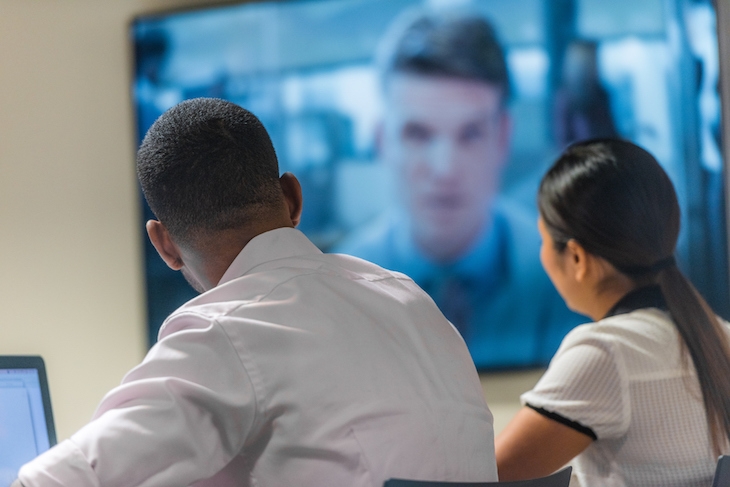When I was ten, the two things we all expected to enjoy by 2020 were flying cars and videotelephony. What never occurred to us was that we might successfully invent one of these things and then fail to use it.
Yet that has largely been the case with video conferencing. Is its day still to come? Will there be some tipping point when we start to hold virtual meetings routinely? Or will video conferencing turn out to be one of those technologies whose promise is never fulfilled: something which ‘has a great future — and always will’.
I don’t know. Certainly it suffered from being oversold too soon. Memories of early video conferencing melt-downs still linger, though the reality today is much better (services such as Zoom or WebEx function well, and increasingly, even at home, people finally have the bandwidth to make full use of them).
Nor did it help that video conferencing was always promoted as a cheap alternative to physical travel. Business travel entails a large component of ‘costly signalling’, whereby your commitment to a project is conveyed by the pain and cost you incur in maintaining it. (‘If I didn’t think this was important, would I have got up at 5 a.m. to fly to Frankfurt to see you?’) Without the symbolic cost and pain of meeting face to face, anything online receives less attention.
My colleague Stephen Fraser suggests that this instinct — to signal that one’s presence at any meeting has come at a high personal cost — drives people on telephone conference calls to act in bizarrely antisocial ways. You can’t call in punctually from a quiet room — that would make it seem easy. So to convey the impression that attendance involves significant sacrifice of diary-time, people dial into conference calls ten minutes late from wholly inappropriate and noisy locations: an airport departure gate, perhaps, or a missile testing ground.
There are other psychological hurdles to be overcome, too. When I join a video conference, I don’t use my laptop’s webcam, but a separate device placed a few feet away. This is not vanity but to avoid that creepy effect of nearly but not quite making eye contact. Better to be off by 45 degrees than by one degree.
Recently I came across a device that might be a game-changer in video calling. The Meeting Owl (no, honestly) is an $800 strigine-shaped device which sits in the middle of a meeting room table. Inside is an array of directional microphones and a loudspeaker. On top is a 360-degree camera. What is clever is that the Owl detects who among the four to eight people around a table is speaking, and zooms in on them automatically. If two or three people talk in rapid succession, it creates a split-screen to feature both or all of them — like an early episode of 24. Above this main picture, in a smaller window, is a panorama of everyone around the table — like Leonardo’s ‘Last Supper’. (You probably know the joke. Jesus walks into a restaurant: ‘Table for 26, please.’ ‘But there are only 13 of you.’ ‘Yeah, I know, but we’re all going to sit along one side.’)
For the first time, the Meeting Owl allows people at remote locations to attend and contribute to a normal physical meeting without disrupting the normal configuration of a meeting room. In a saner world this would revolutionise working behaviour.
But I’m not sure. Ever since the UK adopted American business culture, less and less time seems to be spent being usefully busy than on fatuous activities designed to advertise just how insanely busy you are. In the workplace, technology may be prized more for its labour-creating powers than its labour-saving ones.







Comments